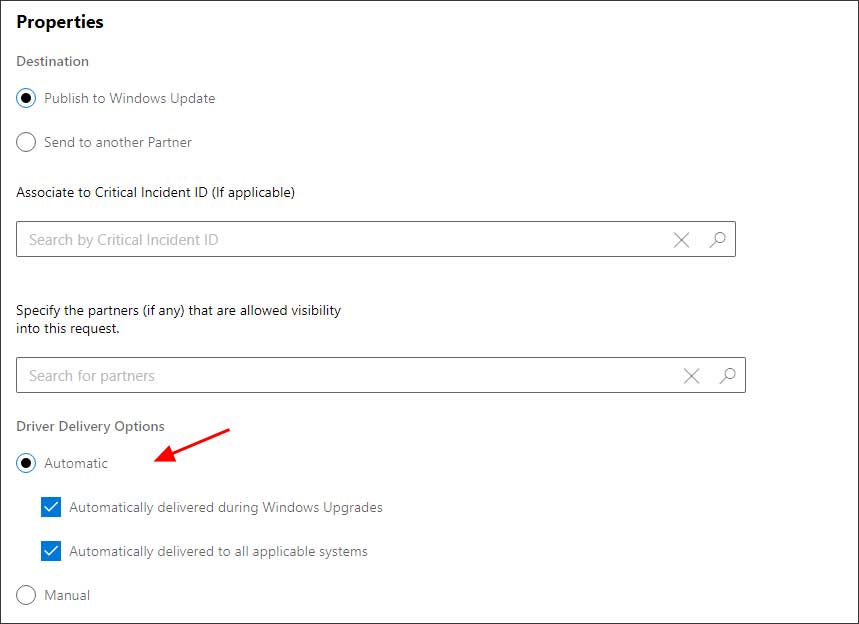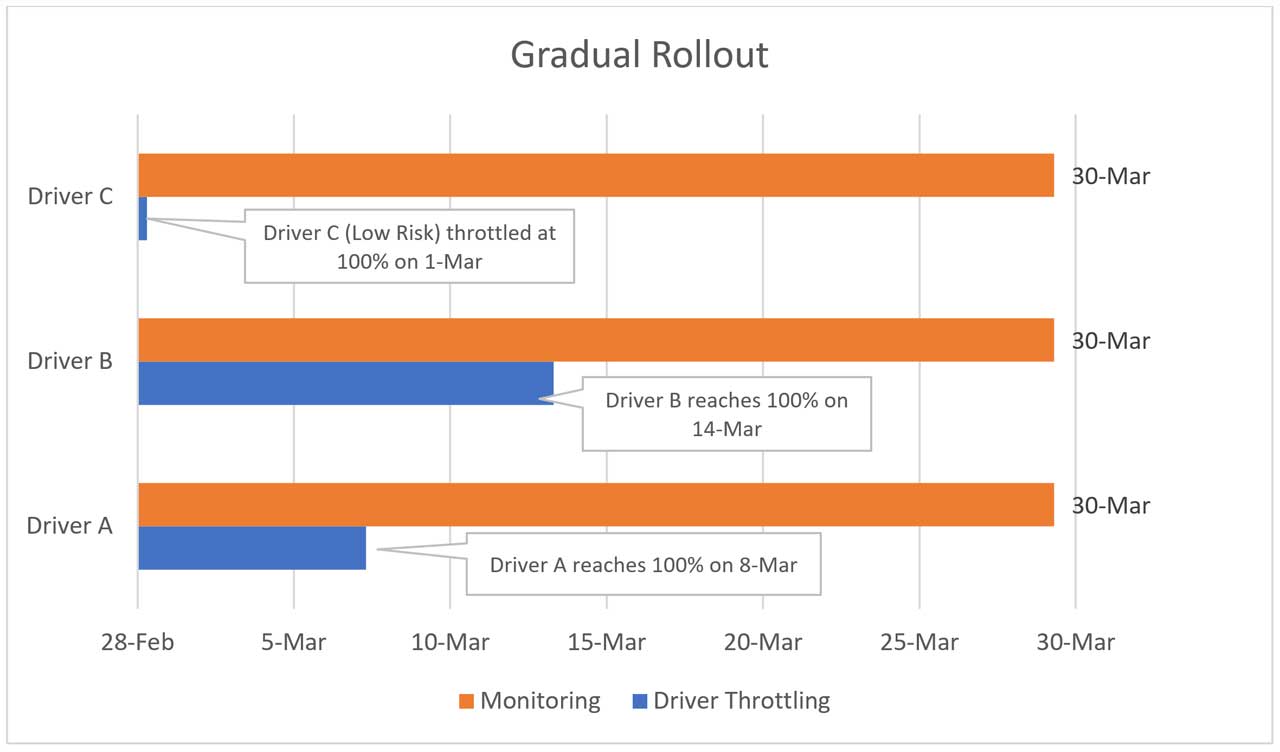- Aug 17, 2014
- 11,777
Microsoft has unveiled a new plan for the delivery of automatic driver updates that they hope will reduce the number of reliability issues users experience in Windows 10.
When a hardware driver is marked as automatic, Microsoft will automatically download and install the driver in Windows 10.

Marking drivers as automatic
Pushing out a new driver to a large Windows 10 population, though, can cause reliability issues, hardware conflicts, or bugs to appear as they begin to be used within a much larger user base.
To resolve these types of issues, this month Microsoft will use a new automatic driver update plan that performs gradual rollouts of new drivers to a small group of programmatically chosen users before slowly releasing the driver to the rest of the Windows 10 population.
This initial population will be made up of Windows 10 devices that are highly active so that there is a higher chance that Microsoft will receive diagnostic data about the quality of the driver and if it is causing any issues.
"The initial set is programmatically selected and is typically both highly active and representative of targeted clusters of hardware ID (HWID) and computer hardware ID (CHID) combinations for the particular driver. The initial rollout targets highly active devices as there is a higher chance of getting diagnostic data from these devices, which enables early failure detection," Microsoft explains.
Microsoft says this initial rollout stage will take approximately 8 days and the rest of the rollout can continue up to 30 days as they gradually increase its availability and the collection of diagnostic data.
This timeframe, though, can vary between drivers depending on whether the drivers has been assessed as a low or high-risk driver as seen by the graph below.

Gradual Rollout Graph

 www.bleepingcomputer.com
www.bleepingcomputer.com
When a hardware driver is marked as automatic, Microsoft will automatically download and install the driver in Windows 10.

Marking drivers as automatic
Pushing out a new driver to a large Windows 10 population, though, can cause reliability issues, hardware conflicts, or bugs to appear as they begin to be used within a much larger user base.
To resolve these types of issues, this month Microsoft will use a new automatic driver update plan that performs gradual rollouts of new drivers to a small group of programmatically chosen users before slowly releasing the driver to the rest of the Windows 10 population.
This initial population will be made up of Windows 10 devices that are highly active so that there is a higher chance that Microsoft will receive diagnostic data about the quality of the driver and if it is causing any issues.
"The initial set is programmatically selected and is typically both highly active and representative of targeted clusters of hardware ID (HWID) and computer hardware ID (CHID) combinations for the particular driver. The initial rollout targets highly active devices as there is a higher chance of getting diagnostic data from these devices, which enables early failure detection," Microsoft explains.
Microsoft says this initial rollout stage will take approximately 8 days and the rest of the rollout can continue up to 30 days as they gradually increase its availability and the collection of diagnostic data.
This timeframe, though, can vary between drivers depending on whether the drivers has been assessed as a low or high-risk driver as seen by the graph below.

Gradual Rollout Graph

Microsoft Unveils New Windows 10 Automatic Driver Update Plan
Microsoft has unveiled a new plan for the delivery of automatic driver updates that they hope will reduce the number of reliability issues users experience in Windows 10.
